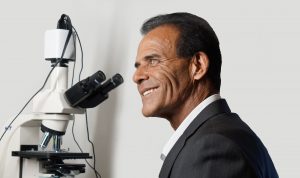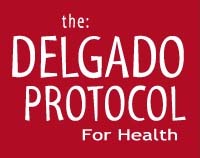Mammography Dangers and Thermography Benefits
 The key to breast cancer survival is early detection; if discovered in its earliest stages, it has a whopping 95 cure rate. There are a number of different breast cancer screening tests used to catch it before it becomes fatal. Mammography is the most popular, however, it is dangerous and completely ineffective. Ultrasounds, self-examination and MRI’s are also used, however, the safest, most effective and most underutilized test is thermography. Read on to better understand the dangers of mammography and to learn the single most effective way to reduce your risk of becoming a breast cancer patient.
The key to breast cancer survival is early detection; if discovered in its earliest stages, it has a whopping 95 cure rate. There are a number of different breast cancer screening tests used to catch it before it becomes fatal. Mammography is the most popular, however, it is dangerous and completely ineffective. Ultrasounds, self-examination and MRI’s are also used, however, the safest, most effective and most underutilized test is thermography. Read on to better understand the dangers of mammography and to learn the single most effective way to reduce your risk of becoming a breast cancer patient.
Mammography Basics
 Mammography is a type of breast imaging test that uses X-rays in attempt to screen for breast cancer. It is an outdated technique and the procedure is expensive, difficult and uncomfortable for the patient. Of greater concern however, is the fact that radiation from X-rays are dangerous, which is why the technician must leave the room before they are taken. Mammograms induce the very disease they are trying to detect, actually increasing your breast cancer risk by 10. They also lead to more aggressive forms of cancer and they increase breast cancer mortality rate by 4.
Mammography is a type of breast imaging test that uses X-rays in attempt to screen for breast cancer. It is an outdated technique and the procedure is expensive, difficult and uncomfortable for the patient. Of greater concern however, is the fact that radiation from X-rays are dangerous, which is why the technician must leave the room before they are taken. Mammograms induce the very disease they are trying to detect, actually increasing your breast cancer risk by 10. They also lead to more aggressive forms of cancer and they increase breast cancer mortality rate by 4.
Equally concerning as those dreary statistics, is the fact that mammograms miss approximately 40 of breast cancer cases and that they are completely ineffective as an early detection tool. In order to show up on a mammogram, the breast cancer must already progress to a tumor form, and the tumor has to progress to a certain size. This means even when mammograms do detect breast cancer, they don’t do so early enough to correct the problem. In fact, one study of nearly 2000 women aged 40-49 found that the risk reduction from 10 years of mammography (versus no breast cancer screening) was a mere 0.05. Researchers also found that 1000 mammograms will save approximately 1 life, and directly contribute to 6 deaths. The risk is even higher in premenopausal women, because their breast tissue is more sensitive to the harmful effects of radiation.
Also alarming, is the fact that mammograms have an extremely high false positive rate, which means they show cancer where there is not. Two separate studies found that 50 of women who receive annual mammograms for 10 years, will have at least one suspicious finding. This leads to aggressive, cumbersome, expensive, anxiety-inducing and completely unnecessary follow-up procedures, which may include biopsies, radiation, chemotherapy and/or mastectomy.
Biopsy Dangers
When mammograms show ‘abnormal’ results, the patient will often be sent for a biopsy. With such a high false positive rate, this means countless women are being sent for this costly, scary and invasive procedure pointlessly. Worse than that though, is the fact that physicians sometimes leave ‘markers’ inside the breasts to make it easier for them to locate the biopsy site in the future. The markers agitate the body and immune system and the body may respond aggressively to these man-made, anaerobic-type lesions. Some women will experience potentially life-threatening health ramification caused by these markers 3-8 years down the road and have no idea that it is the marker that is causing the disease.
Thermography
Thermography records images using a visible light rainbow scale (infrared sensors). Colors show-up instantly on a screen, to indicate heat patterns in the breasts, providing an instant glimpse into how well balanced you are from one side to the other, and indicating any potential pathology. Thermography is a neurovascular test, a functional test, and a test of physiology, which basically means it shows how the body works. It’s the most underutilized FDA approved detection available, and it is far superior to any other method out there, especially when it comes to early detection. The reason for this, is that a tumor does not need to be present in order for thermography to identify the presence of breast cancer or the beginnings of it.
In contrast to mammography, thermography does not produce false positives, and it is completely safe, affordable and non-invasive. The patient simply stands in front of a camera and an image appears on a screen in front of them, instantly. Perhaps most important, is the fact that it is extremely effective — it detects a whopping 90 of breast cancer cases and it does so without the use of cancer causing X-rays. Its effectiveness rate increases even further when used in conjunction with ultrasounds. Ultrasounds help to identify the precise site and location of a tumor; and together they have a 96-98 detection sensitivity rate.
Thermography for Breast Cancer Prevention
Thermography is not only an effective tool for breast cancer detection, it can also be used to reduce the risk of developing breast cancer (and any other type of cancer for that matter). It is the only test that actually identifies precursors to breast cancer — inflammation, estrogen dominance and lymphatic congestion. Thermography can also be used on any part of the body in order to scan for unusual heat patterns which would indicate that part of the body is beginning to break down. This is beneficial for preventing breast cancer because breast cancer does not always start in the breasts. Oftentimes, it is triggered by unhealthy bowels, because the bowels are responsible for processing and eliminating harmful estrogen’s that trigger breast cancer. Breast cancer risk is also associated with poor oral health and gingivitis, and with thyroid disease. When any of these areas of the body begin to breakdown, thermography can identify it. This allows a physician to pinpoint the appropriate treatment so that corresponding lifestyle modifications can be taken in order to restore optimal health, and vastly reduce breast cancer risk.
References:
http://www.breastthermography.com/mammography_thermography.htm
http://www.bardbiopsy.com/pdf/UltraClip_Dual_Trigger_Patient_Brochure_S11697-0.pdf
https://www.ncbi.nlm.nih.gov/books/NBK22311/





